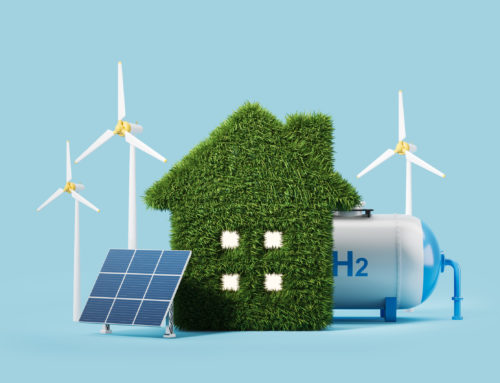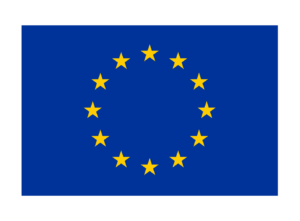23.6.2022, Hotel Tatra congress hall, Bratislava
The second session of the Round Table was opened by the moderator Michal Muhl from SIEA. He briefly described the purpose of the meeting, clarified the goals of the project and the organizational structure of the Round Table. General secretary Marek Malina gave an opening speech on behalf of the project coordinator, the Association of Construction Entrepreneurs of Slovakia. He highlighted the importance of mutual meetings of stakeholders, discussions on the topics that the GreenDeal4Buildings contains and the creation of coalitions between stakeholders so that the agreed measures and visions are fulfilled and have a real impact on buildings and the construction industry as such.
The meeting program was divided into three thematic blocks:
1. Energy services
2. Platform for financing sustainable investments
3. Financing of education for innovations
- In the first part, on the topic of energy services, contributions were made by Mr. Marcel Lauko from the Association of Energy Service Providers and Mr. Jiří Karásek from SEVEN, Energy efficiency center.
- Mr. Lauko addressed the topic of Guaranteed Energy Services (GES), their status and use in Slovakia. He took the issue from perspective and with a view to the future. He presented the current state of GES, its essence and business model as well as the legislative background. In addition to evaluating the current and past status, he also presented innovative business models for the public sector that would support the use of GES and facilitate access to building renovation financing. These are GES co-financed by EŠIF, a combination of GES and works contracts (this model was already used in the renovation of the prison building in Sabinov) and GES-type projects focused on operational efficiency. To improve the use of GES, he also proposed legislative changes, namely: changing Eurostat’s conditions, enabling GES with an impact on public debt and enabling GES with financing only from public sources using the institution of the guarantee of real achievement of savings. Better use of GES in the public sector would help speed up the renovation of roughly a third of the 15,000 public buildings that require renovation. For more, see the presentation.
- The second contribution was given by Mr. Jiří Karásek from SEVEN, Energy efficiency center on the topic of Smart energy services: examples and perspective. He presented the main trends in energy industry, which are the reduction of energy consumption, the effort to decentralize energy production and the support of the concept of energy communities and energy positive areas. Obstacles that need to be overcome are outdated legislation, low consumer awareness and distrust of renewable resources.
- At the end of the first part, Stanislav Laktiš, SIEA project manager, presented measure no. 4, which will be included in the road map. This is a proposal to create a Platform for smart energy services (or Prosumer platform). This platform will be focused on the development of energy services providing comprehensive smart energy solutions, decarbonization of flexibility and investments in renewable energy sources and demand side flexibility sources. It will serve to share data, know-how, best practices, innovative solutions, case studies, new business and financial models. Based on a vote through slido, this measure was supported by all participants of the round table.
- The second part of the meeting was devoted to the presentation of the measures that emerged from the negotiations of the expert group for the financing sustainable investments, namely: measure no. 2: Platform for financing sustainable energy investments and measure no. 3: Financial blending (small PPP projects) for financing sustainable energy investments and building renovations. Proposals for measures were presented by Frantisek Doktor from the ViaEuropa Competence Centre. Details of the measures are in the document Proposals of measures OS 1-2 SK Roadmap.
- The platform for financing sustainable energy investments will offer comprehensive solutions that would enable banks, financial intermediaries, companies providing energy services or other investment pooling entities to deploy attractive sustainable energy financing products to a large number of end-users in Slovakia, including regions that are poorly served by commercial funds. The intensity of aid from the EU will decrease, so it is necessary to prepare for a higher level of co-financing and mixing of resources, which will help spread the risks. An example can be the system used in Belgium, where EU funds are used only for the initial, riskiest phases of projects. The participants expressed interest in meeting a representative from Belgium.
-
Measure no. 3 aims to develop standardized principles for PPP (public-private partnership) and EPC (Energy Performance Contracting) in the field of energy renovation of public buildings (so-called Small PPP projects).
- In the subsequent discussion, the need for complex solutions for buildings and complex projects resonated the most. Such measures should be preceded by rigorous planning over the horizon of several decades. Such planning requires relevant data, the acquisition of which is a major problem for many cities and municipalities. To finance such measures, extensive financial resources will be needed, the effective use of which will require financial blending and a combination of different resources. For example, the combination of GES and EŠIF was mentioned.
- The representative of the ŠFRB informed about the initiative to create a fund to support the renovation of public buildings, into which private capital could enter. ŠFRB is initiating a meeting to develop such a measure, and the GreenDeal4Buildings project could provide support for implementation.
- The representative of SIH (Slovak Investment holding) clarified that they are planning financial instruments for the renovation of public buildings, it will be credit financing based on a similar concept to SLOVSEFF. Round table meetings can help to set up and synchronize these financial instruments.
- Private companies also demanded for business environment to be predictable. This means that the plans and strategies of the state and municipalities should be clear, so that the private sector can prepare and adapt to the requirements.
- The third part was dedicated to financing education for innovation and measures to support education. The introduction to this part was delivered by Mr. Pavol Kováčik, president of the Association of Construction Entrepreneurs of Slovakia (ZSPS).
- Pavol Kováčik highlighted the need to develop an education strategy, as labor productivity in the construction industry has risen by only 10% in the last 10 years, which is very little. At the same time, the pressure on innovations in the construction industry is growing – robotization, modularization, IoT, automatically guided machines, combining data from BIM and GPS when working with technology and others are becoming a trend. Circular construction or the use of information systems in buildings is also one of the trends. All of this needs to be reflected in programs to improve education in the area of innovation and be added to the educational curriculum. Such programs should then be mandatory for schools.
- Mr. Marek Malina from ZSPS presented measure no. 5 Strategy for professional education at the 2nd level, further and continuous education in the energy and construction sector for the implementation of innovations, including its financing. The task of the measure is to develop a strategy and new educational programs for vocational education at the 2nd level, continuous vocational education and further education at the second level for workers from the energy and construction sectors, i.e. j. for apprentices in formal education at the 2nd level and workers after their initial, compulsory education and vocational training or after entering working life. This may include retraining professionals from other sectors with skills transferable to the construction industry. The strategy will aim to increase the number of qualified construction professionals at all levels of the building construction and renovation, operation and maintenance value chain.
- The subsequent discussion addressed several topics and problems in the education of construction professionals. The biggest deficiency, which is felt more and more intensively, is the lack of teachers of professional subjects. Not only the issue of salary is important, but so is the prestige of the teaching profession, therefore measures should be proposed that will increase the level of perception of the teaching profession. People should be adequately supported to become teachers, especially in the construction professions.
- An important aspect of the teaching process is the material and technical provision, which will support education and the development of innovations.
- Another topic was dual education. The representative of ŠFRB stated that the current setup of dual education is mainly focused on jobs behind the belt. A certain form of dual education in construction would be possible, but the problem is with the impermanence of constructions in the sense of their migration for orders.
- Another problem of dual education is the focus on only one competence and not on a complex of competences.
- Another suggestion was to work with educational advisors to promote the study of construction in a better light than before.
- As for innovations in education, one of them is education through virtual and augmented reality.






